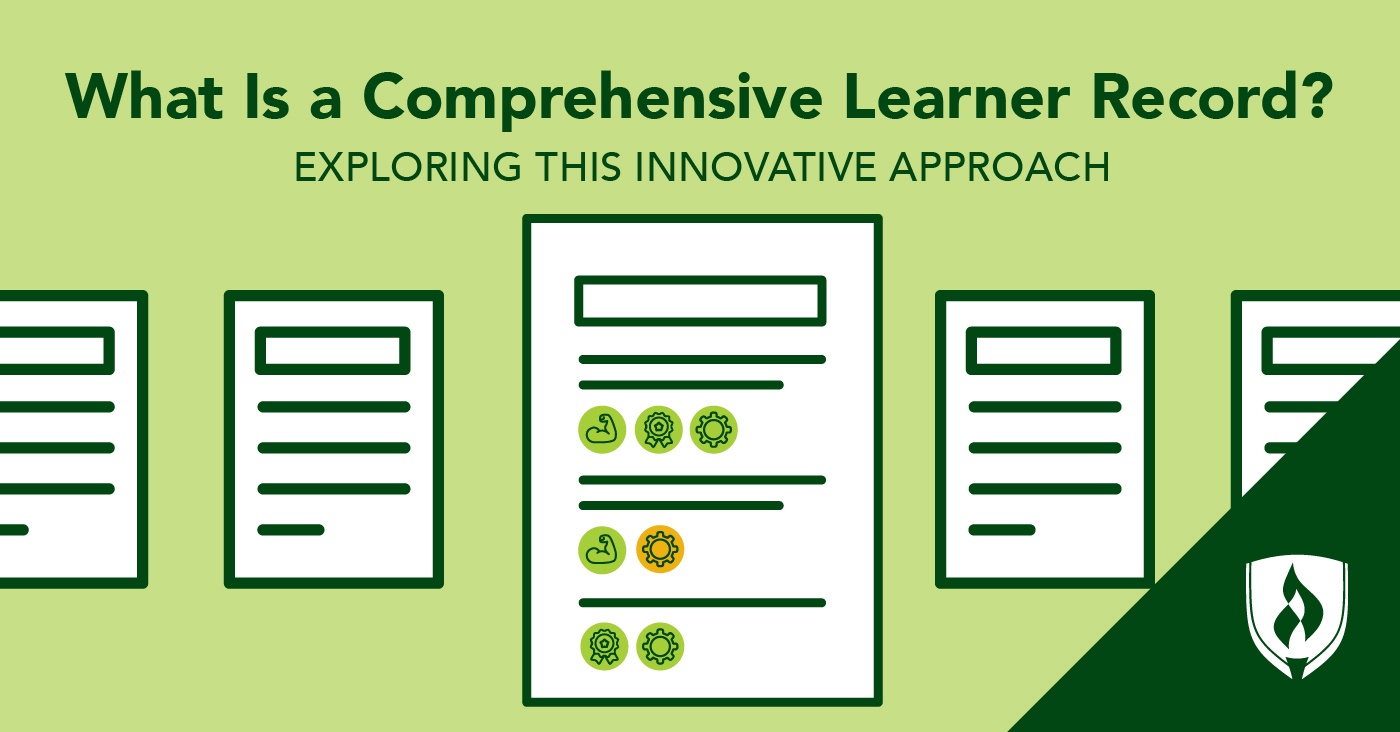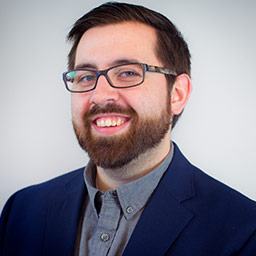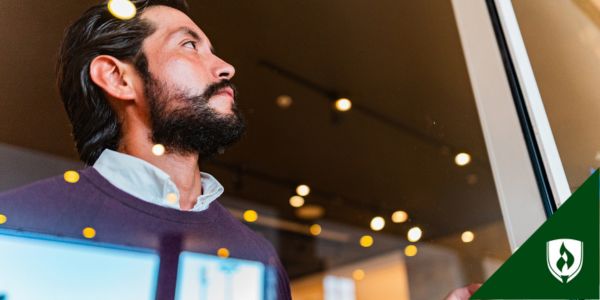What Is a Comprehensive Learner Record? Exploring This Innovative Approach
By Will Erstad on 02/21/2022

No matter how far back you look in human history, education has been the foundation for our accomplishments. As such a long-running, central component of our collective histories, it may be easy to assume there’s little room for innovation in education.
Rasmussen University is putting that assumption to rest.
The University embraced online education in the early 2000s and is a leading institution in developing academic programs to fit a competency-based education model. The next innovation initiative? Joining a select group of institutions to help develop the Comprehensive Learner Record (CLR), a skills-based transcript that shows what learners know and can do – not just letter grades and GPA. The future of higher education is on-demand, digital, and skills-based – and not just the classroom, but also how learning is documented and shared.
“We know that many learners have valuable skills and knowledge that simply are not being documented as students are learning both in and out of the classroom,” says Dr. Amber Garrison Duncan, executive vice president of the Competency-Based Education Network. “The breadth of a CLR captures all learning, regardless of where it occurs, so individuals can use it in the labor market to unlock mobility.”
Intrigued? Let’s take a closer look at what the Comprehensive Learner Record is, how it works, and the potential benefits to students, employers and educators.
What is a Comprehensive Learner Record?
The idea of documenting academic progress is nothing new. We’ve all seen report cards and transcripts designed to track a student’s progress. But what gets lost in these documents are the specific skills the learner has demonstrated along the way—and this is what employers truly care about. The CLR fixes this by providing a more in-depth accounting of specific skills and competencies demonstrated.
Where a traditional transcript will show that you received a “B” in at the end of the term, the Comprehensive Learner Record expands on this documentation by acknowledging both the program-specific skills and the transferable skills demonstrated—as well as their level of mastery. For example, a CLR report on a Human Resources course could show how well a student demonstrated critical thinking skills by their ability to develop an organizational risk management plan.
With this sharable digital record that can be accessed at any time, students will be able to look back and identify the specific learning outcomes and competencies they’ve covered in their coursework and how well they were demonstrated.
For more information about how the Comprehensive Learner Record works at Rasmussen University, see the video below:
What are the origins of the Comprehensive Learner Record?
Dr. Brooks Doherty, assistant vice president for academic innovation at Rasmussen University says the biggest challenge the CLR solves is the “skills gap” employers perceive in new graduates.
“There’s plenty of data that suggests employers don’t believe college graduates are coming into the workforce as prepared as they would like them to be,” Dr. Doherty says, noting that often employers perceive candidates to be lacking in “soft” or transferable skills. “With the CLR, students can say with certainty to an employer that every single skill—without exception—that this program says is necessary to be successful in the world and the workplace has been demonstrated, all with data to back it up.”
With that end goal in mind, the CLR is still evolving. Rasmussen University is one of a small group of institutions tasked with the shaping of CLR standards. This nationwide group has gathered the input of employers and educators alike in order to build a viable framework for widespread adoption.
“U.S. higher education has always approached innovation and change from the ground up,” says Dr. Garrison Duncan. “Because of this, innovation happens as the result of loosely coupled institutions taking a leap and demonstrating what works before the vast majority of institutions come on board.”
Dr. Garrison Duncan notes that this was the approach when the original unified transcript first came to be in the early 1900s. Institutions at the time recognized the need to adopt common record-keeping, and the CLR aims to be the next logical progression.
“We are now seeing an evolution of the transcript to the CLR to better serve students and employers,” says Dr. Garrison Duncan.
What are the benefits of the Comprehensive Learner Record—and what could the future hold?
The clearest benefit to the CLR is the amount and depth of information provided by this sharable online record. As graduates begin their job search, they’ll have the ability to access and use the CLR as a reference when tailoring their resumes to highlight key job skills employers are seeking. This can be a valuable resource for interview prep as well—students now have a host of fresh examples to review and draw from for answering the common, “Tell me about a time when...” question prompt.
For the employer, the CLR provides a less opaque summary of what a candidate is capable of. Instead of assumptions about what a prospective employee covered in their accounting course, they will see a competency-by-competency breakdown.
While this current early form of the Comprehensive Learner Record is still a new concept for the public, further development and adoption of the CLR could unlock intriguing capabilities—including documentation of competencies developed outside of traditional higher education settings.
“Ideally, a Comprehensive Learner Record should be able to capture learning wherever it happens,” says Dr. Doherty. “We [higher education institutions] want—and need—to capture quality learning wherever it happens so students don’t lose time, credit, or training that could ultimately be applied toward a degree—wherever that pathway exists.”
Dr. Doherty notes that while the CLR in its current form only supports learning outcomes input from Rasmussen University, there may come a time in the future where additional institutions and sources of learning could add to this student-owned document.
“The competency-based education movement is one that begins to shift power away from the institution and to the student,” Dr. Doherty says. “Similarly with the Comprehensive Learner Record, you’re shifting some of that control away the registrar’s office and to the student. The student can access this document and share it whenever they want, and in an ideal future state they’ll be able to add to it.”
The next step in higher education
Education is a process of evolution and growth. That’s true for students striving to develop their expertise and for the educational institutions seeking new ways to improve the experience.
“Rasmussen has been leading the way in competency-based education and by being in the cohort of early adopters and producers of comprehensive learner records,” Dr. Garrison Duncan says. “The University is at the forefront of innovation in American higher education and demonstrating what is possible when learner-centric design is put into practice to improve student outcomes.”
If you’re ready to take the next step in your higher education experience, visit the Empowered Learning® page to learn more about what Rasmussen University is doing to put students in the driver’s seat of their education.




